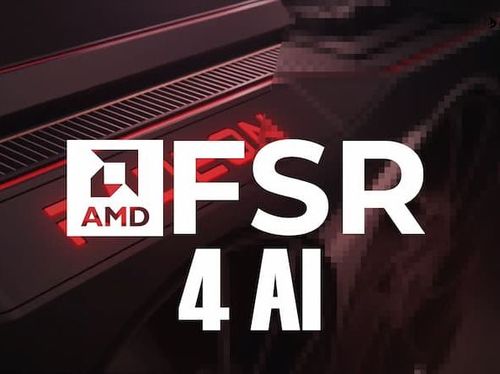AMD has officially announced that its next iteration of FidelityFX Super Resolution (FSR) technology, FSR4, will be fully powered by Artificial Intelligence. This new development will be a significant shift in AMD's approach to graphics enhancement and performance optimization. Let's see why any of this matters at all.
The New Era of AI-Driven Graphics
AMD's senior vice president Jack Huynh recently disclosed the company's plans for FSR4 during an interview at IFA 2024. The tech giant has been quietly working on this AI-based solution for nearly a year, which is a major pivot from their previous analytical and filter-based approaches.
"We completely pivoted the team about 9-12 months ago to go AI-based," Huynh revealed, hinting at the scale of this transformation. This now puts AMD in direct competition with Nvidia's DLSS and Intel's XeSS technologies, both which already leverage AI for upscaling and frame generation.
Boosting Performance and Battery Life
One of the primary goals of AMD FSR4 will apparently be fully AI-based frame generation and interpolation. But here is the twist: AMD isn't just focusing on raw performance. They're also aiming to significantly improve battery life, especially for handheld gaming devices.
Huynh emphasized this point, stating, "My number one goal right now is to maximize battery life. I think that's the biggest complaint." He envisions a future where gamers can enjoy titles like Black Myth: Wukong for three hours on a single charge, instead of the current 60-minute limit many handheld devices face.
This focus on efficiency could be a game-changer for portable gaming PCs like the ASUS ROG Ally and the Lenovo Legion Go. AMD's strategy to make this work involves potentially locking frame rates at 30 or 35 fps to balance smooth gameplay and extended battery life.
Wide Compatibility or Hardware-Specific?
While AMD has traditionally kept its FSR technology open and compatible with a wide range of hardware, including competitors' GPUs, the shift to AI-based processing raises questions about future compatibility.
AMD's history immediately suggests they might maintain this inclusive approach, possibly by implementing different processing paths for various hardware configurations. This could be similar to Intel's XeSS, which offers optimized performance on Arc GPUs while still supporting other graphics cards through alternative instruction sets.
However, the mention of NPUs (Neural Processing Units) in AMD's latest Ryzen AI 300 series processors hints at potential hardware-specific optimizations. For now, we're not quite sure whether FSR4 will require specific hardware or maintain its broad compatibility.
What This Means for Gamers
For PC gaming enthusiasts, AMD FSR4 being fully AI-based would potentially offer:
- Improved image quality and performance across a wide range of games
- Better battery life for handheld and laptop gamers
- Possible advantages for users with AMD's latest hardware, while likely still supporting older GPUs
While we don't have a specific release date for FSR4, the fact that it's been in development for 9-12 months suggests we might see it sooner rather than later. However, as with previous upscaling technologies, it may take some time for game developers to implement support for the new API.
In the meantime, AMD isn't sitting idle. They've recently updated their Fluid Motion Frames 2 technology, promising a driver-level solution for frame generation. This could serve as a stopgap for handheld gaming devices looking to boost performance and efficiency in the short term.

